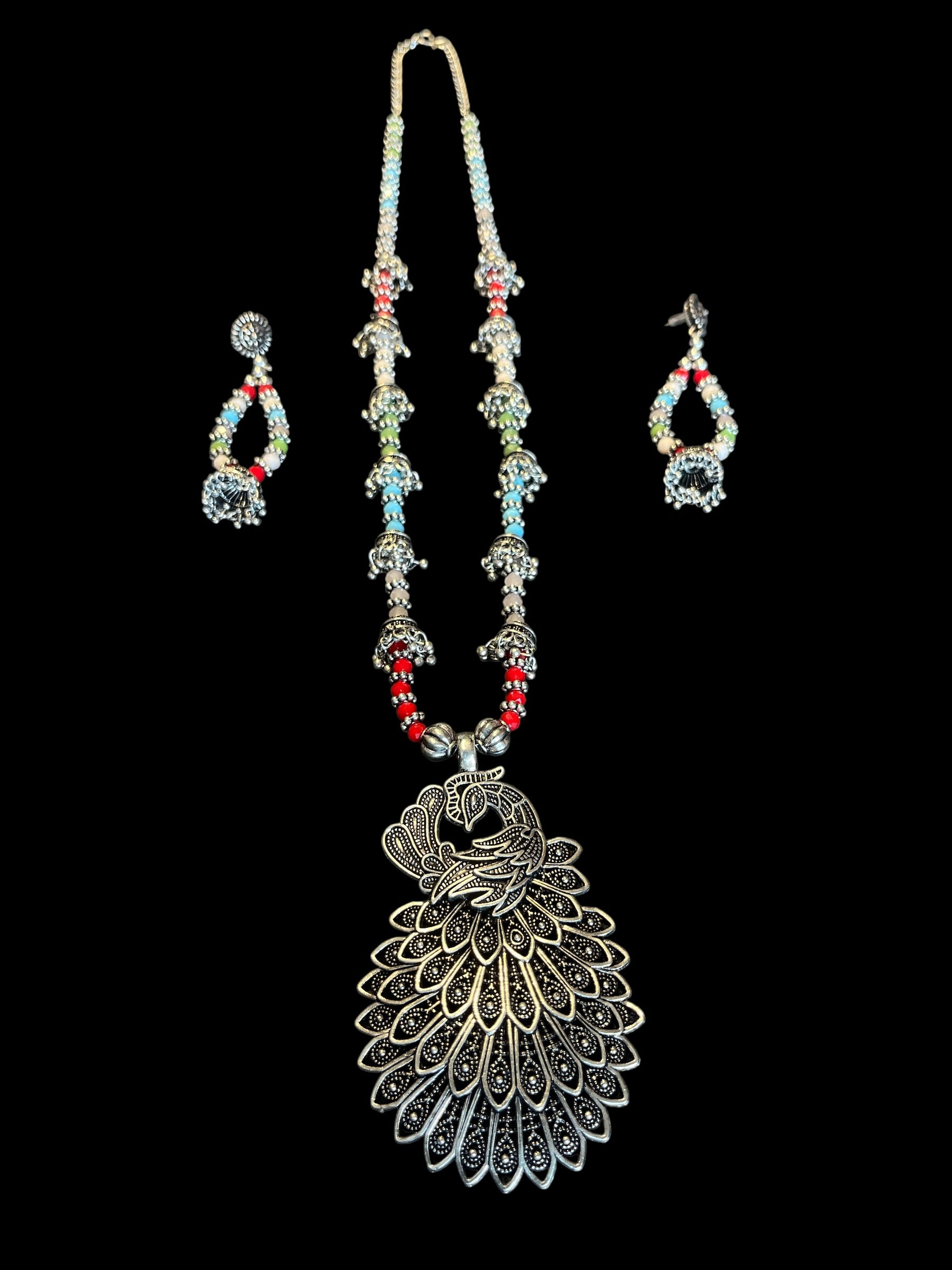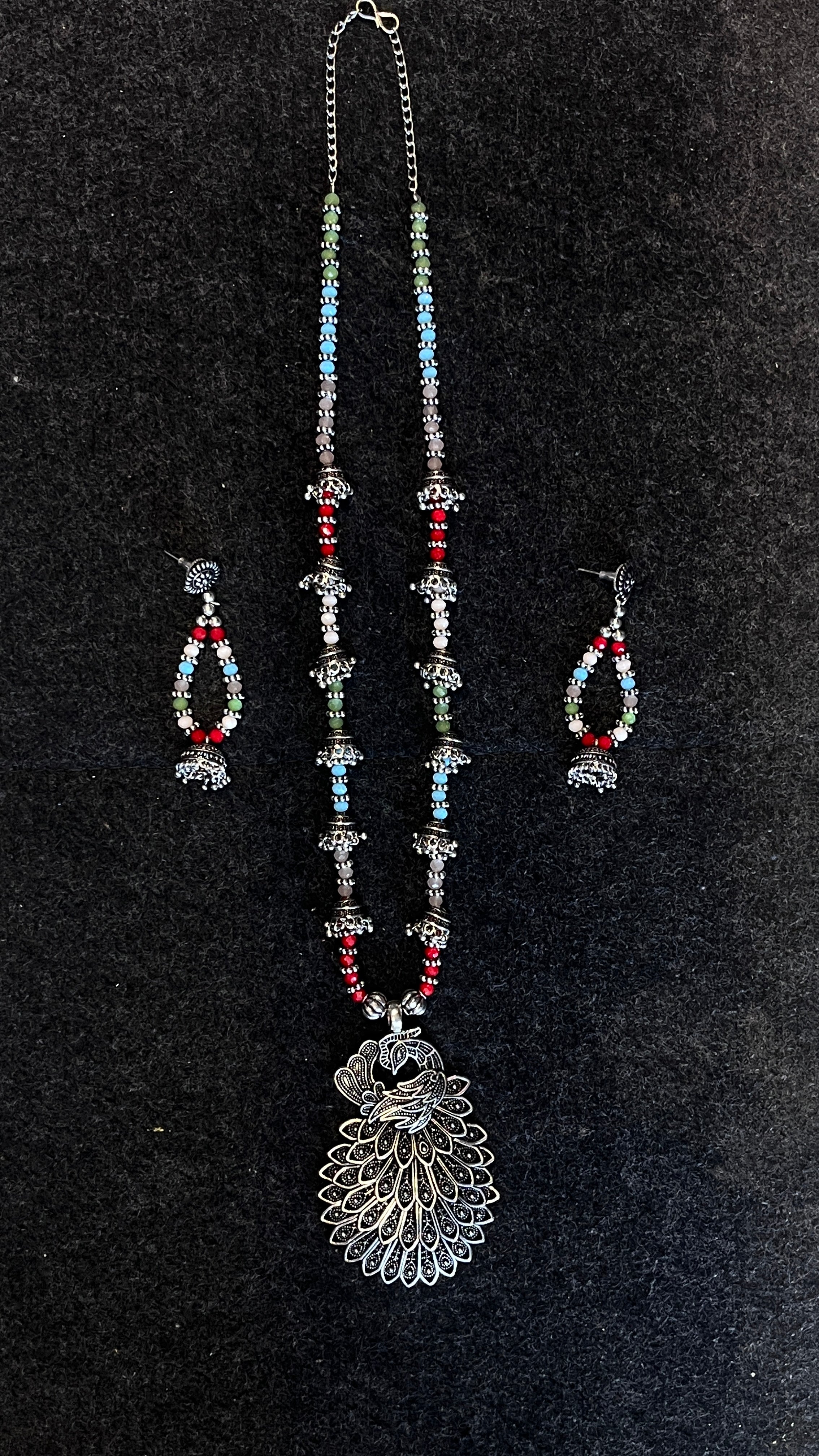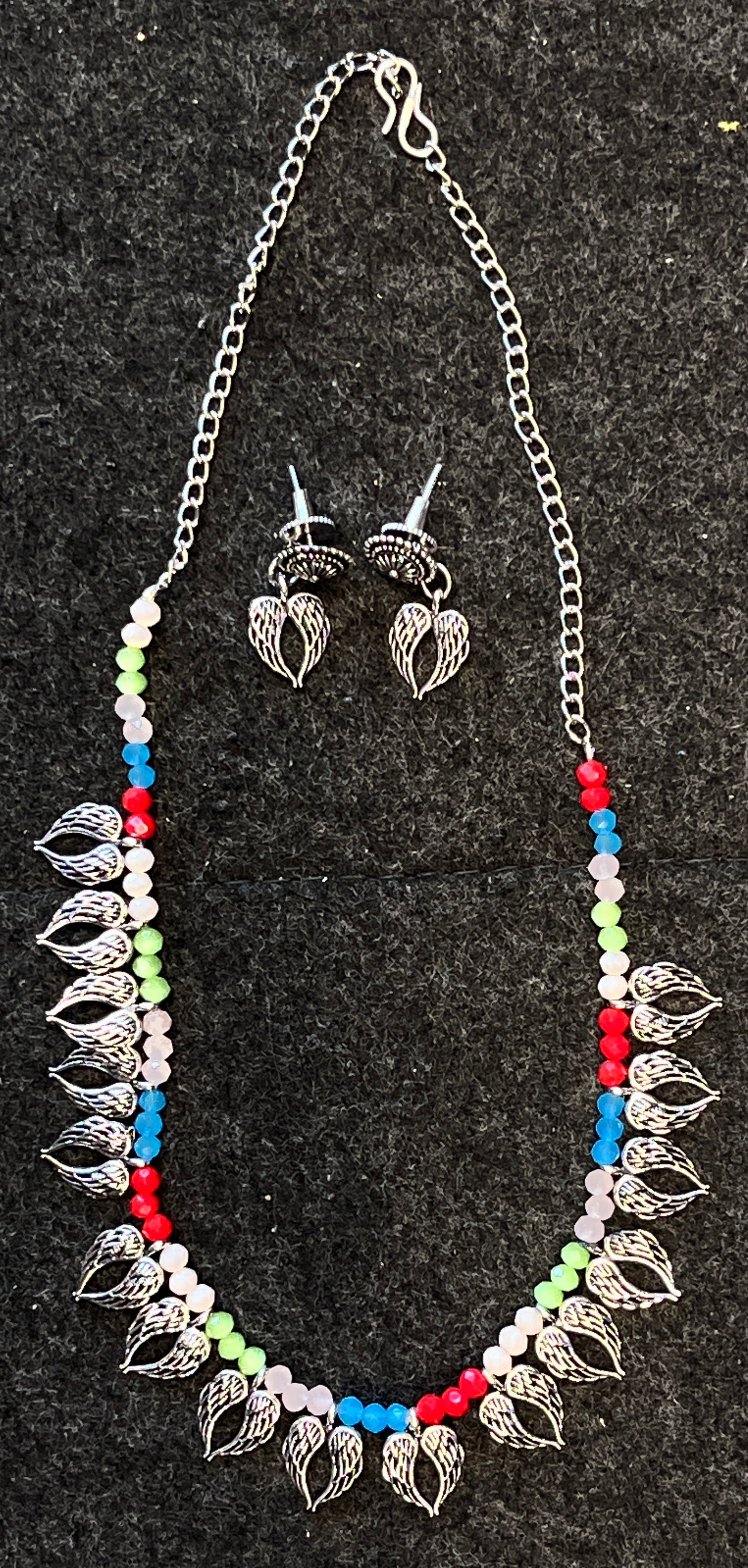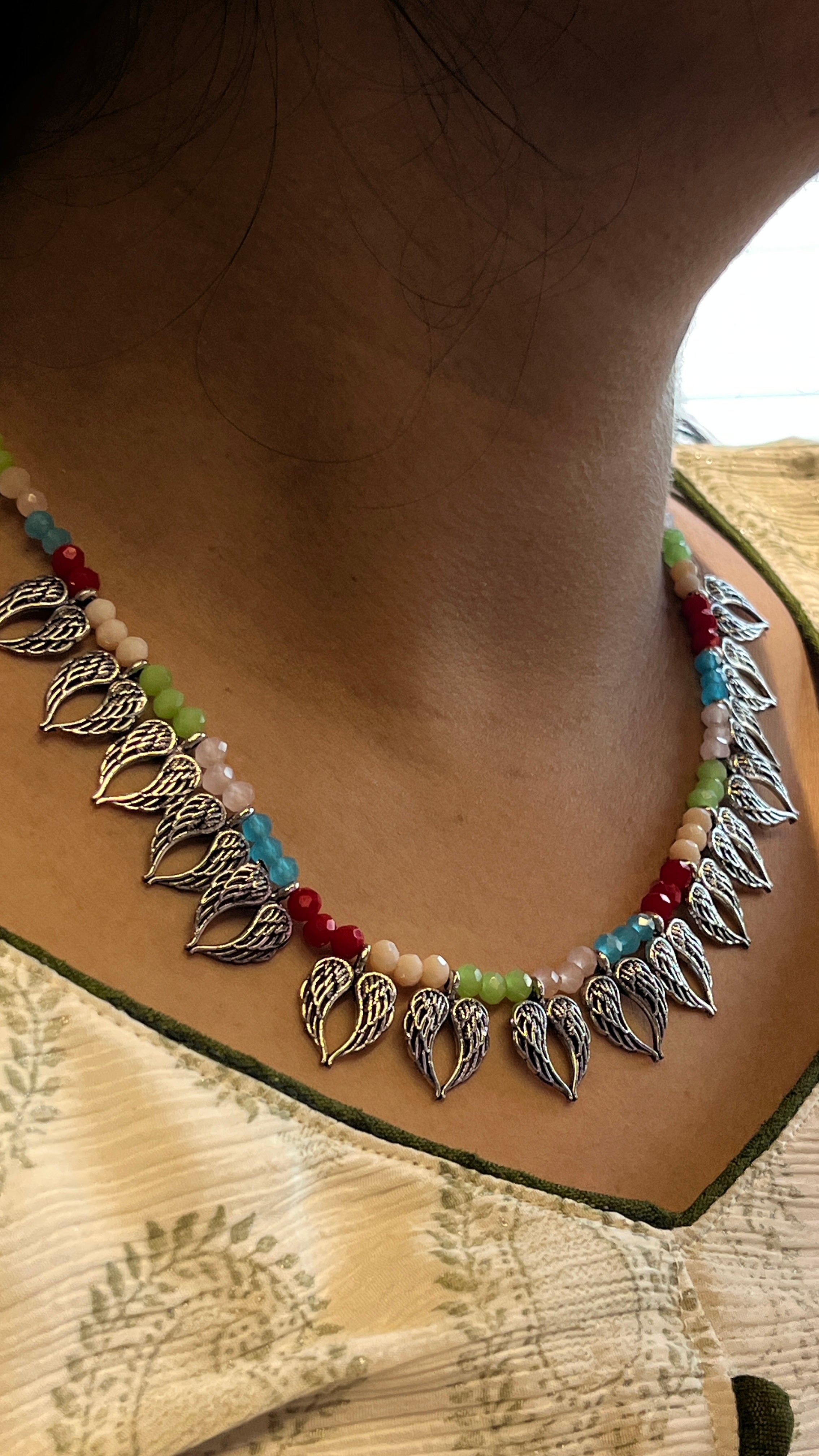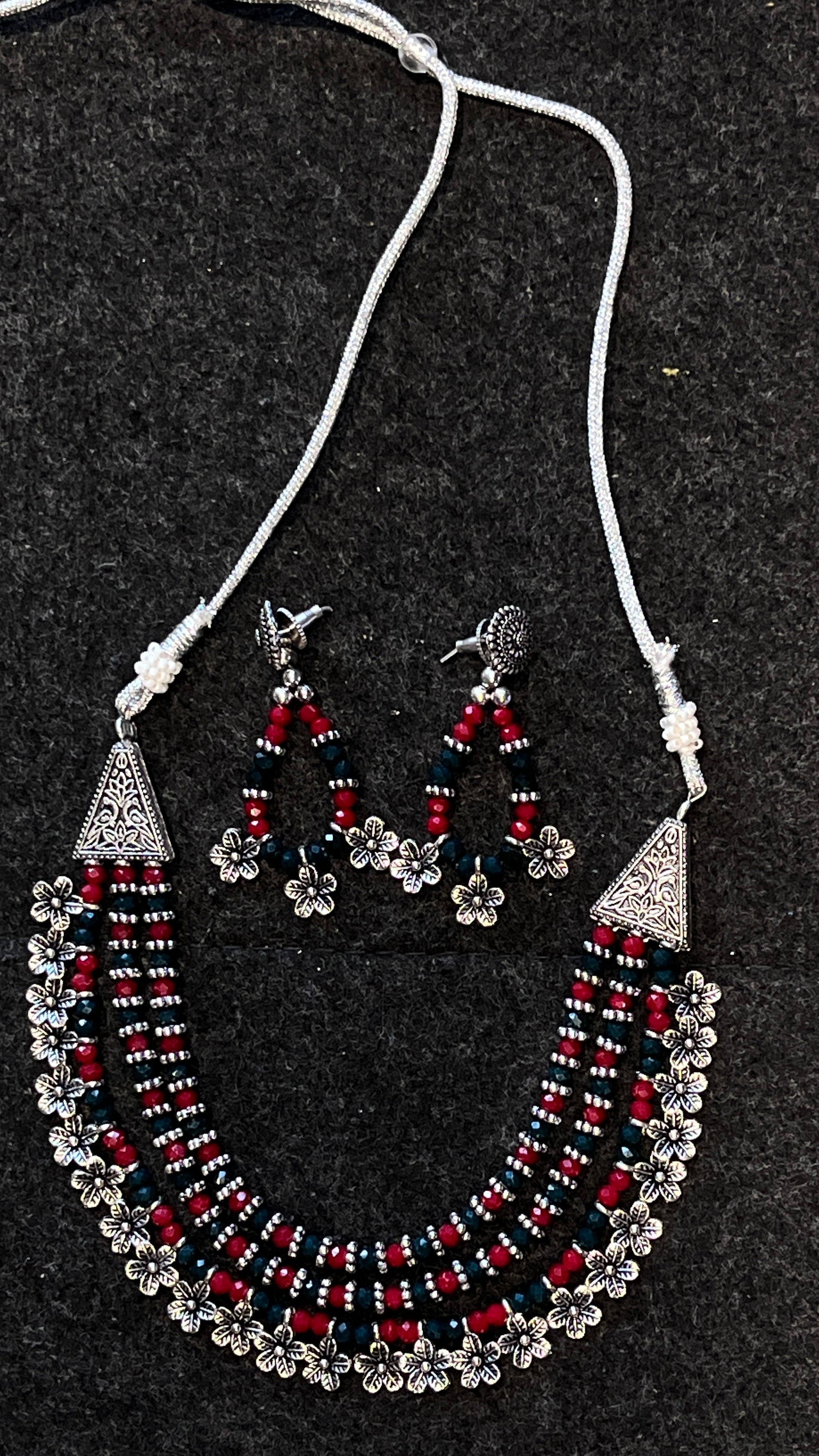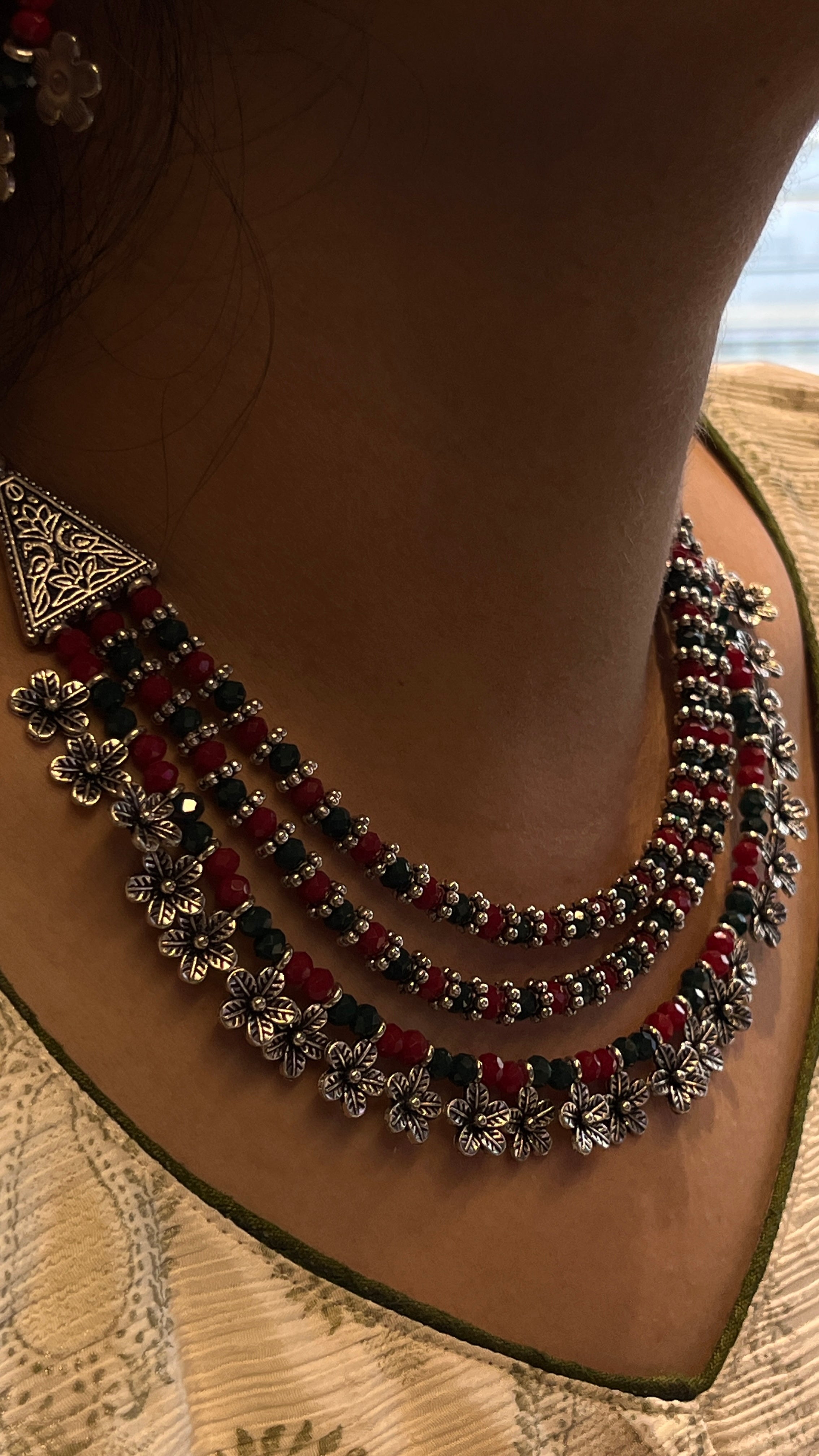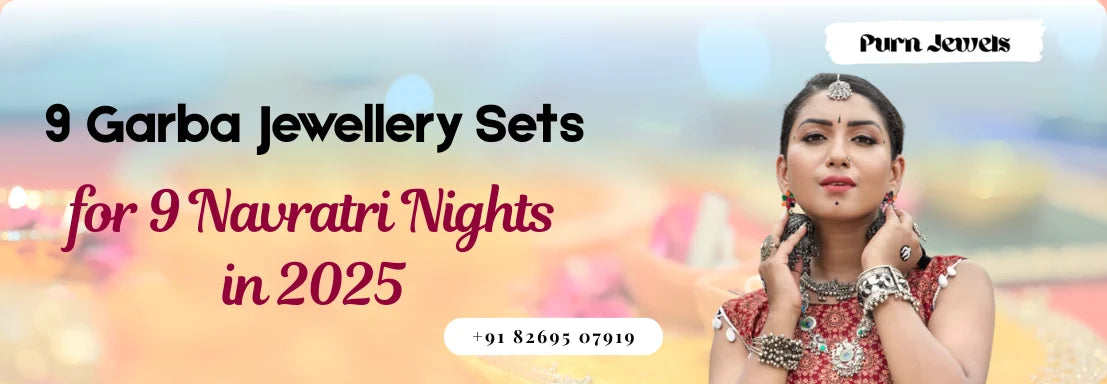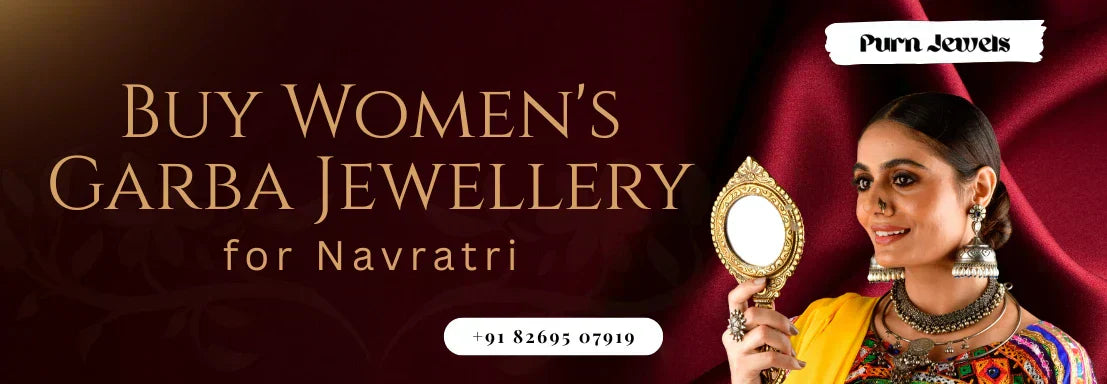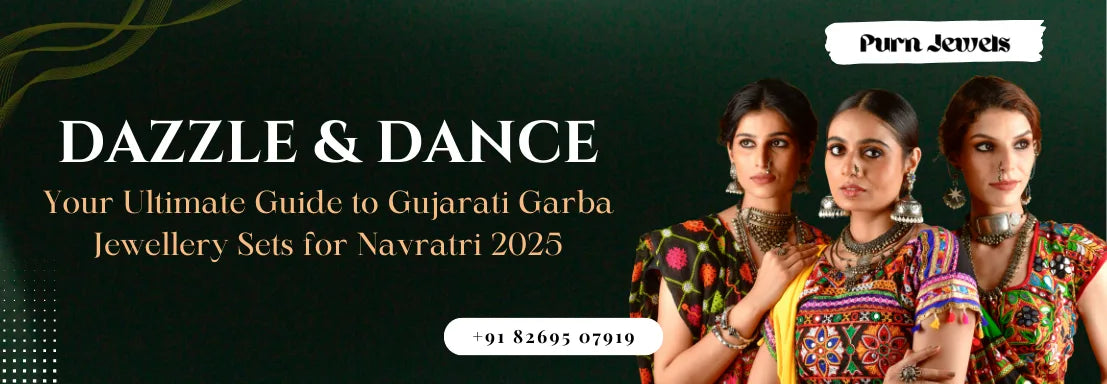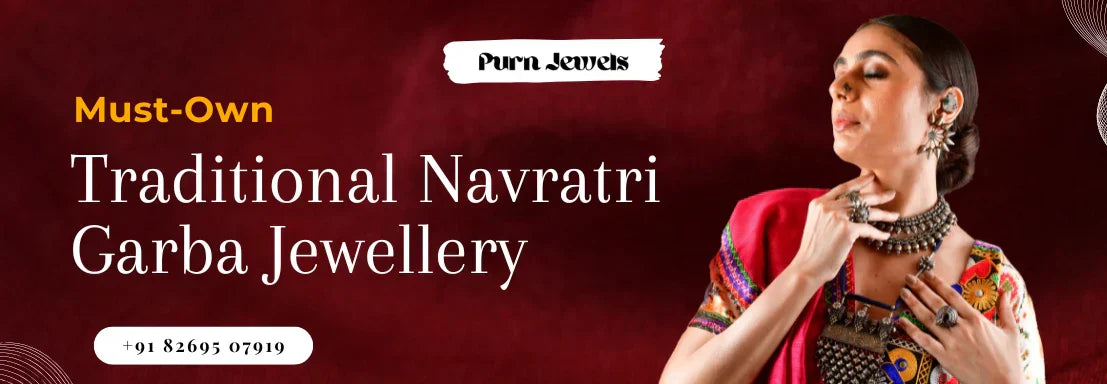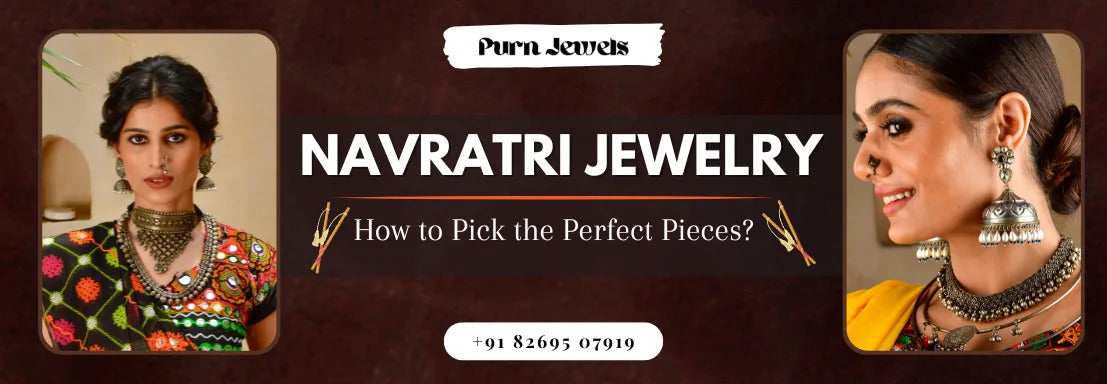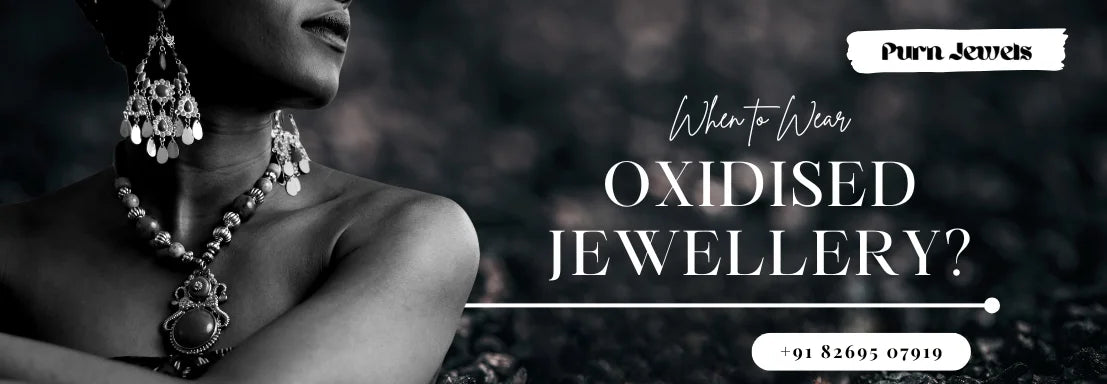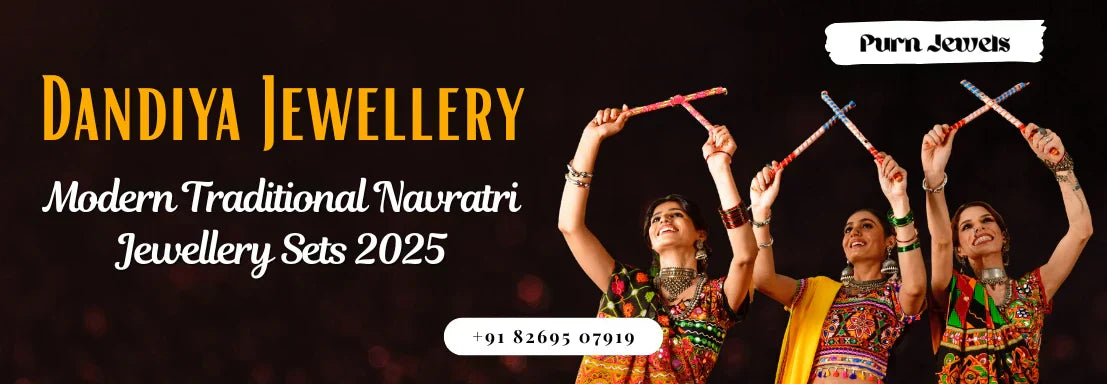
Dandiya Jewellery: Modern Traditional Navratri Jewellery Sets 2025
Executive Summary: The Dandiya Jewellery Forecast for 2025
The Dandiya jewellery landscape for 2025 is defined by a dynamic convergence of tradition and modernity. A new generation of consumers, driven by a desire for personal expression and cultural re-engagement, is moving beyond purely ceremonial adornment to embrace a "Modern Traditional" aesthetic. This report forecasts the rise of fusion styles, with oxidised jewellery emerging as the dominant and most versatile trend. It further identifies a critical shift in consumer priorities, where functional design attributes—specifically, lightweight construction and secure clasps—are now considered as important as aesthetic appeal, particularly for the dance-intensive events of Navratri.
The market analysis reveals a significant bifurcation. On one side, vibrant local markets in cultural hubs like Ahmedabad offer high-volume, low-cost oxidised pieces, catering to consumers seeking affordable, on-trend accessories. On the other side, a global online bazaar, populated by curated brands, provides a premium experience with handcrafted, high-value collections that highlight artistry and cultural narratives. This report synthesizes these trends to provide a comprehensive guide for consumers seeking to curate their festive looks and offers strategic recommendations for retailers and designers aiming to position their products effectively in a complex and evolving marketplace.
Chapter 1: The Cultural Foundation: Sharad Navratri 2025
The nine-night festival of Sharad Navratri serves as the cultural and spiritual canvas upon which Dandiya and Garba celebrations are painted. In 2025, the festivities will commence on Monday, September 22nd, with Ghatasthapana, and conclude with the celebration of Vijayadashmi/Dussehra on Wednesday, October 1st. Each of these nine days is consecrated to a specific form of Goddess Durga, and the spiritual significance of the festival—from the invocation of strength and stability on Day 1 to the bestowal of wisdom and fulfilment on Day 9—is deeply intertwined with the choice of attire and adornments.
A critical element of the festival, particularly for fashion and jewellery, is the day-wise colour theme. Each colour is chosen to reflect the unique qualities of the goddess worshipped on that day. For instance, the first day, dedicated to Maa Shailputri, is associated with the colour white, which symbolises purity and peace, while the second day's colour, red, honours Maa Brahmacharini and represents passion and strength. A nuanced understanding of these themes is essential for participants, as wearing the appropriate colour is a key part of the festive ritual. It is important to note that the colour schemes for Sharad Navratri are distinct from those observed during Chaitra Navratri, which occurs in the spring. A consumer or brand that fails to make this distinction risks misalignment with a widely followed tradition, undermining the authenticity of the festive experience.
The following table provides a comprehensive guide to the day-wise colours and their significance for Sharad Navratri 2025.
Sharad Navratri 2025 — Daywise Table
| Navratri Day | Sharad Navratri 2025 Date | Goddess Worshiped | Day-wise Colour | Significance of Colour |
|---|---|---|---|---|
| Day 1 | September 22, Monday | Maa Shailputri |
White
|
Purity, peace, new beginnings |
| Day 2 | September 23, Tuesday | Maa Brahmacharini |
Red
|
Love, passion, strength |
| Day 3 | September 24, Wednesday | Maa Chandraghanta |
Royal Blue
|
Divine energy, stability, wisdom |
| Day 4 | September 25, Thursday | Maa Kushmanda |
Yellow
|
Cheer, joy, brightness |
| Day 5 | September 26, Friday | Maa Skandamata |
Green
|
Harmony, fertility, growth |
| Day 6 | September 27, Saturday | Maa Katyayani |
Grey
|
Strength, balance |
| Day 7 | September 28, Sunday | Maa Kaalratri |
Orange
|
Energy, enthusiasm, warmth |
| Day 8 | September 29, Monday | Maa MahaGauri |
Peacock Green
|
Beauty, grace, positivity |
| Day 9 | September 30, Tuesday | Maa Siddhidatri |
Pink
|
Love, kindness, harmony |
| Day 10 | October 1, Wednesday | Vijayadashmi / Dussehra | - | - |
Chapter 2: The Evolving Aesthetics: Modern Traditional Dandiya Jewellery Trends
Dandiya jewellery has evolved beyond mere traditionalism to become a canvas for personal style and cultural storytelling. The most significant trend for Navratri 2025 is the fusion aesthetic, which seamlessly blends heritage craftsmanship with a contemporary bohemian sensibility.
The Ascendance of Oxidised: The Bohemian Heart of Navratri
Oxidised jewellery is poised to dominate the Navratri 2025 landscape. Its core appeal lies in its "fusion-friendly" nature, which offers a "modern twist to traditional looks". This style is characterised by its rustic, antique finish and is celebrated for its ability to add a distinctive touch to traditional outfits. Key elements of this trend include oxidised metal, mirror work, colourful beads, and tassels, all of which lend themselves to creating a bold and energetic look under festive lights. Materials such as oxidised silver and German silver are particularly popular for their vintage appeal and versatility.
Fusion, Tribal, and Heritage: New Interpretations of Old Stories
The popularity of tribal and boho styles is directly linked to a broader cultural movement. These pieces are not simply accessories; they are viewed as a form of "personal style" and "creativity". This trend is particularly evident in the reimagining of heritage designs. A prime example is the Kudi motif, a classic Maharashtrian floral earring originally crafted in gold and pearls. The design is now being re-imagined in sterling silver with an oxidised finish, transforming a revered heirloom into a versatile, modern accessory.
This phenomenon is not unique to India. The research reveals a parallel trend in Korea, where the traditional Norigae accessory has been "reimagined for modern fashion". This global pattern indicates that millennials and Gen Z are not abandoning their heritage but are actively re-engaging with it on their own terms. By recasting age-old motifs in contemporary materials and forms, they are making history "wearable and personal," ensuring that cultural legacy is carried forward in every design.
The Art of Contrast: Jadau Kundan, Temple, and Mirror Work
While oxidised jewellery captures the bohemian spirit, traditional ornate styles like Jadau Kundan and Temple motifs continue to hold a significant place in the Dandiya ensemble. These classic styles are now being cleverly integrated into contemporary sets to create striking contrast. For example, an oxidised silver belt might be adorned with antique temple motifs, merging two distinct styles into a single exquisite piece. Mirror work, a staple of Kutchi and Rajasthani aesthetics, is another vital element. It serves a practical function during the dance by reflecting the stage lights, making a dancer's movements and gestures "stand out" with every twirl. The Jadau Kundan and Tribal collections available from branded retailers further demonstrate this stylistic range, offering everything from intricate, high-value pieces to bold, ethnic statements that tell a story of artistry and tradition.
The following matrix provides a detailed overview of the primary jewellery trends for Navratri 2025.
Jewellery Trend Overview
| Trend Name | Key Elements | Aesthetic | Ideal Pairings |
|---|---|---|---|
| Oxidised Boho | Rustic metal, mirrors, tassels, colourful beads, ghungroos | Earthy, Free-spirited, Bohemian | Cotton lehengas, Indo-western outfits, printed kurtas |
| Jadau Kundan | Kundan stones, gold plating, intricate craftsmanship | Royal, Ornate, Traditional | Silk or brocade chaniya cholis, Anarkalis, ethnic gowns |
| Reimagined Heritage | Sterling silver, classic motifs (e.g., Kudi, Peacock), oxidised finish | Elegant, Minimalist, Sophisticated | Indo-western dresses, contemporary outfits, simple sarees |
| Temple & Tribal | Antique motifs, coins, tribal patterns, cowrie shells | Authentic, Story-driven, Regal | Flared skirts, dhoti pants, traditional chaniya cholis |
Chapter 3: Curating the Dandiya Ensemble: A Guide to the Perfect Set
Building the perfect dandiya jewellery set is a strategic process that balances aesthetic appeal with the functional demands of the dance floor. The approach is often hierarchical, starting with one or two core statement pieces and then adding complementary accessories to complete the look.
The Core Trio: Necklaces, Earrings, and Bangles
The foundation of any Dandiya ensemble rests on the necklace, earrings, and bangles. For necklaces, chokers have emerged as a "dance-ready statement piece". Their design, which sits close to the neck, prevents tangled chains during energetic movements, making them a practical and stylish choice. An alternative is the layered necklace, which adds a sense of "depth" and visual interest to a neckline.
Statement earrings are another essential element, designed to "swing with every step" and "add rhythmic charm to every twirl". The most popular styles include oversized jhumkas, chandbalis, and danglers, which are chosen for their intricate designs and ability to frame the face.
Bangles and kadas complete the core trio. Beyond their visual appeal, bangles are believed to create a favourable frequency with their rhythmic sound, elevating the spiritual aspect of the performance. Dandiya dancers often choose styles with mirror work or ghungroos to add a cheerful sound and visual dynamism to their movements.
Beyond the Basics: Essential Accessories for a Complete Look
Once the core pieces are in place, a dancer can elevate their look with a selection of vital accessories. Waist chains, also known as kamarbandhs, are a popular choice as they define the waist and add a flourish to a flared chaniya choli or lehenga. They are not only decorative but also serve to complete the garba look, symbolising the sacredness of the feminine form.
Maang tikkas are another quintessential accessory. Worn on the forehead, they add a "regal touch" and highlight a dancer's facial features. Finally, anklets or
payals are crucial for completing the ensemble, with their rhythmic jingle adding another layer of sound and movement to the dance. The deliberate selection of these accessories—from the primary neckpiece to the finishing anklets—demonstrates a cohesive and thought-out approach to styling that is characteristic of the modern Dandiya dancer.
Chapter 4: The Functional Imperative: Comfort Meets Style
The energetic and prolonged nature of Dandiya and Garba dances dictates that jewellery must be as functional as it is beautiful. For Navratri 2025, the priority on design has shifted significantly to favour pieces that are "lightweight" and "dance-friendly".
The Dance-Floor Ready Report: Prioritizing Lightweight Designs
Traditional heavy jewellery, while visually stunning, can be a liability during a dance-filled night. The modern consumer prefers options that provide maximum visual impact with minimal physical burden. Oxidised jewellery, in particular, is favoured for this reason, as it is often designed to be light and comfortable enough to be worn for hours on end.
Choker necklaces are preferred over longer, heavier pieces as they stay in place and avoid tangling, while drop and dangler earrings provide movement without the excessive weight of their larger counterparts. The choice of jewellery is, therefore, a strategic one that acknowledges the physical demands of the festival.
The Secure Connection: A Guide to Jewellery Clasps for Dandiya
The risk of losing a piece of jewellery during vigorous dancing is a major concern. Therefore, the choice of clasp becomes a crucial aspect of functional design. The analysis of jewellery clasps reveals a hierarchy of reliability. The lobster clasp is the most common and is generally a reliable choice for everyday and medium-weight pieces. For higher-end or heavier jewellery, the barrel clasp is a more dependable option, as one side screws securely into the other.
Conversely, some clasps, such as the S-hook or magnetic clasps, may pose a risk. While S-hooks can be effective for heavy pieces, they are less secure than a locking mechanism, and magnetic clasps, while convenient, may not be strong enough to withstand vigorous movement. The most prudent choice for Dandiya is jewellery that incorporates a well-made, secure clasp that will remain fastened, ensuring that the dancer can focus on their performance without concern for their adornments.
Chapter 5: Marketplace Analysis & Price Dynamics
The Dandiya jewellery market is a two-tiered system, characterised by a vast difference in price points and value propositions between local festive markets and global online retailers.
The Local Pulse: A Survey of Ahmedabad's Festive Markets
Ahmedabad, a cultural epicentre of Navratri, is home to bustling local markets that are synonymous with festive shopping. Law Garden, for instance, is a favourite spot where small vendors offer a diverse range of oxidised jewellery with unique and statement designs. The prices here are notably accessible, with oxidised pieces starting at ₹20 and going up to ₹350, depending on the quality and design. Other notable markets, such as Rani No Hajiro and Ratan Pole, also offer a plethora of traditional apparel and accessories, providing a vibrant, in-person shopping experience that is often defined by a culture of bargaining.
The Global Bazaar: Navigating Online Dandiya Jewellery Stores
In stark contrast, online platforms provide a curated, branded experience that targets a different segment of the market. Websites like Mortantra and Mirraw showcase extensive collections of oxidised, Tribal, and Jadau Kundan jewellery. These retailers position their products not as simple accessories but as high-value pieces of art, often with a story of cultural heritage and craftsmanship. A Tribal necklace set from a branded online store, for example, can be priced as high as ₹19,000, while a Jadau Kundan piece can reach ₹50,000.
The significant price gap between a ₹350 oxidised piece from a street vendor and a ₹19,000 Tribal set from a branded website reveals a clear market segmentation. The local markets cater to a high-volume, low-cost consumer base that values affordability and quick access to trends, while online retailers target a premium segment that prioritises craftsmanship, exclusivity, and a compelling cultural narrative. This bifurcation shows that the modern consumer for Dandiya jewellery is not a monolith but a diverse group with varying budgets and motivations.
The table below provides a practical comparison of the price ranges found in each market segment.
Jewellery Price Comparison (INR)
| Jewellery Type | Local Market Price Range (INR) | Online Retailer Price Range (INR) |
|---|---|---|
| Oxidised Earrings | ₹20 - ₹350 | ₹1,000 - ₹6,000 |
| Oxidised Necklace Set | ₹20 - ₹350 | ₹1,000 - ₹25,000 |
| Tribal Bangle (1 piece) | N/A (General oxidised) | ₹1,500 - ₹6,500 |
| Maang Tikka | ₹20 - ₹350 | ₹1,000 - ₹4,500 |
| Kundan Choker Set | N/A (General oxidised) | ₹1,500 - ₹50,000 |
Chapter 6: Synthesis & Actionable Recommendations
The analysis of Dandiya jewellery for Navratri 2025 reveals a comprehensive narrative of cultural evolution and market segmentation. The festival's adornments are no longer a static form of traditional wear but an active medium for personal and cultural expression. The shift towards "Modern Traditional" fusion styles, exemplified by the rise of oxidised, tribal, and reimagined heritage motifs, demonstrates a global trend of cultural re-engagement driven by a new generation.
For consumers, the key takeaway is to embrace a holistic approach to styling. A focus on lightweight and secure designs is paramount for comfort and practicality during the dance. By understanding the day-wise colour themes, they can curate a collection that is both aesthetically pleasing and culturally resonant. The choice between local markets and online retailers should be guided by their budget and whether they seek affordable, high-volume trends or high-value, handcrafted pieces.
For retailers and designers, the strategic imperative is to recognise the dual nature of the market. Marketing efforts should focus on "storytelling," highlighting the craftsmanship and cultural narrative behind each piece, particularly for the premium online segment. Curating collections that align with the day-wise colour palette offers a powerful way to engage with consumers and position products as part of the festive ritual.
Looking ahead, the evolution of Dandiya jewellery will continue to be influenced by digital platforms and the ongoing demand for personal expression. The line between traditional and contemporary design will continue to blur, fostering an environment where innovation and heritage coexist to create new aesthetics that honour the past while looking firmly toward the future.

